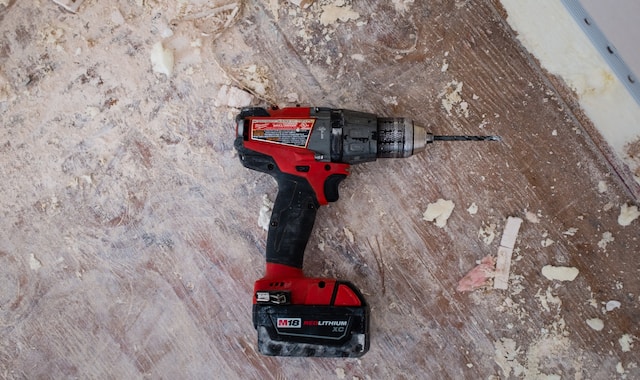Chimney Inspection Charleston SC is a comprehensive check of all the readily accessible parts of your fireplace and chimney. Chimneys need a semi-regular check to spot deterioration such as missing bricks, which can become structural hazards over time.
A level 3 inspection is the most involved and goes further into concealed areas, like the attic or crawl space, to look for signs of serious damage. This type of inspection is usually needed after dramatic weather events, such as a hurricane or fire.

A Level 1 inspection is your typical annual chimney sweep cleaning and exam. It’s usually what most homeowners will have done, especially if they’re fairly regular fireplace users.
During a Level 1 inspection, the chimney technician will examine accessible portions of your chimney, including the flue. They will also clean the chimney with a special vacuum system that removes the combustion byproducts from the walls of your chimney.
If you’re planning on selling your home in the future, a Level 1 is a good idea as it will give potential buyers confidence that the fireplace and chimney are in good condition. However, if your chimney has suffered damage, a Level 2 is required to ensure that it can be repaired properly.
Getting a Level 1 inspection done successfully all comes down to working according to the rules. That means ensuring that your driver’s license, medical certificate, skill performance evaluation certificate, log book and ELD are all up to date. It’s also important to be polite and cooperative during the process, providing any documentation the inspector requests. This will make the whole experience a lot less stressful for everyone involved. Plus, it will ensure that the inspection is complete and accurate.
Level 2 Inspection
The chimney lining, a clay, ceramic, or metal conduit that covers the flue inside of your fireplace, is a crucial safety component. It protects chimney walls from the intense heat of fire and keeps byproducts like smoke and harmful vapors, such as carbon monoxide, from traveling through potential cracks in the masonry and into the home.
A professional will examine the lining to make sure that it is intact and in good condition. The lining also provides a moisture barrier that prevents water from entering the flue and damaging or corroding the chimney structure. Cracks in the masonry that let water seep into the chimney can weaken the structure and cause deterioration, allowing dangerous byproducts to leak into your home. A pro can check for damage to the masonry and recommend necessary repairs.
Creosote, the byproduct of incomplete combustion, builds up on chimney walls over time. This build-up is flammable, and a chimney filled with creosote is a fire waiting to happen. If not removed with regular chimney sweepings, it can ignite and burn the flue liner, surrounding masonry, and combustible materials of the home. During a Level 2 inspection, a professional will look for creosote and other signs of flammability.
When you need a level two chimney inspection, it’s important to find the right chimney professionals. Make sure that the professional you choose has a certification from the National Fireplace Institute, and has experience with all types of chimneys. The technician should use special equipment to look deep into the chimney and determine its condition.
Chimneys that haven’t been inspected in a long time may be caked in creosote and filled with debris. If a chimney fire occurs, the creosote and other materials can release toxins into the home. Many homeowners insurance policies require regular chimney inspections to ensure that future damage is covered by the policy.
It’s also a smart idea to get a Level 2 inspection before buying a home. The last thing you want is to buy a house that’s in need of a serious chimney repair. A Level 2 inspection will reveal any existing problems and give you a clear picture of the chimney’s condition.
Level 3 Inspection
The level 3 inspection is a comprehensive check of the vehicle including the public, secondary and confidential VINs to determine ownership documents. This process takes 45 – 60 minutes on average. The process can be reduced by applying a Pareto analysis to identify the most common defects and their frequency. This will help in developing countermeasures and implementing them to reduce the defect rate.
A clean inspection is critical to maintaining a low CSA score. An out of service violation costs $264 per day and can affect your ability to earn/retain business or get affordable insurance. Choosing the right general inspection level can also impact your confidence in the inspection result and your costs.
Professional Tools
Chimney sweeps use a variety of tools to perform their job. Some are basic, while others are specialized. These tools include brushes, brooms, scrapers, and ladders. In addition, chimney sweeps also carry a variety of protective gear and safety equipment. This includes a full-faced, powered air-purifying respirator that protects them against harmful carcinogens while they work in customer homes.
Brushes and brooms are the chimney sweep’s main cleaning tools. They are used to remove flammable creosote, soot, and other debris from the inside walls of the fireplace and flue. This process usually takes a few hours to complete, depending on the chimney’s condition and how much creosote has built up. The sweep may also need to do more complicated repair tasks, such as firebox and damper repair or tuckpointing and crown repair.
Another important tool for chimney sweeps is the inspection camera. This device allows them to visualize the interior of the chimney and check for blockages without entering the home. It is especially useful for high-up locations like church steeples and other tall chimneys that can’t be reached with a ladder.
Other important tools for chimney sweeps include a power drill and screwdriver, as well as a chimney vacuum cleaner. The chimney vacuum cleaner is a portable, powerful tool that sucks up soot and other debris while it rotates. It can save a lot of time and effort for the sweep, making the cleaning process faster and more efficient.
It is crucial for chimney sweeps to have the right tools to protect themselves and their customers. While many people are familiar with chimney sweeping equipment like brushes and brooms, there are other tools that can help make the job more efficient and safe for everyone involved. For example, a chimney sweep can use a roof platform, which can be rented or bought from many different vendors. These platforms are built on or placed on the rooftops of buildings to allow chimney sweeps to reach higher areas with ease.
Lastly, the chimney sweep needs to have an accurate and up-to-date accounting software solution to manage the business effectively. A field service management app, such as Jobber, can automate scheduling, dispatching, reporting, and invoicing to save time and money. It also provides visibility into all aspects of the business and helps to increase client satisfaction, referrals, and growth.
Preparation
When you schedule a chimney sweep appointment, there are steps you can take to help them get the job done as quickly and efficiently as possible. For example, you should move any items that are on or near the mantel to another part of the room or cover them with plastic or a drop cloth to protect them from soot and dust that may fall off as they clean your fireplace and chimney. You should also remove anything that might be stuck on your fireplace ledge, such as pictures or knick-knacks, so they can reach the bottom of the chimney for inspection and cleaning.
When chimney sweeps arrive at your home, they will set up a work area, which includes covering the floor around the fireplace with a tarp and putting down a large dust collection vacuum to decrease the amount of soot and debris that gets into your living space. The chimney sweep will then start by removing any flammable materials from your fireplace and assessing the condition of the lining of the chimney, which can be impacted by soot buildup, rust, or mold. If any repairs are required, the chimney sweep will make them before leaving.
Chimneys can be dangerous, especially if they are not regularly inspected and cleaned. They can become a fire hazard due to the accumulation of creosote, which is a by-product of wood-burning fireplaces. Additionally, if the chimney becomes blocked by birds’ nests, leaves, or other debris, it can block the flow of smoke and gases from the fireplace to the home.
The CSIA recommends a minimum of one chimney sweeping per year to remove creosote and other by combustion products, as well as to prevent blockages caused by bird’s nests, twigs, and leaves. It also helps to increase the efficiency of your fireplace and reduces carbon monoxide levels in your house.
Chimney sweeps use a variety of tools, including brushes, ladders, and vacuum cleaners, to perform their services. They also wear protective gear, such as gloves, goggles, and a mask to avoid exposure to soot, ash, and other debris.







